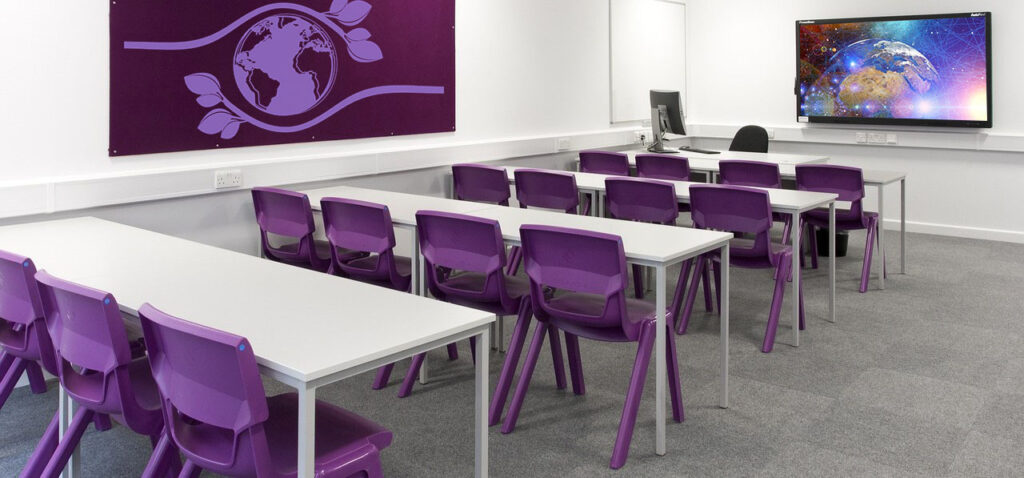Empowering UK Schools: Reducing Energy Costs in Schools with Voltage Optimisation

In the current landscape of our educational institutions, where knowledge should bloom and young minds flourish, a growing concern looms overhead: the soaring energy bills that burden schools across the UK. As schools and colleges strive to provide a conducive learning environment, the financial strain caused by hefty energy costs has become a pressing concern.
In this context, we would like to introduce the transformative solution of Voltage Optimisation Technology, as a pragmatic approach to not only mitigate the issue but also pave the way for sustainable, financially helpful and responsible operations.
The Shocking Reality: The Burden of Energy Costs
Educational institutions play a pivotal role in shaping the future, but the present reality is sobering. Energy bills have quadrupled over the past two years, and with government support dramatically curtailed last April, many schools are facing potential bankruptcy.
It costs a lot to run a school, and keep it heated, well lit, with all manner of equipment running smoothly. They are typically large buildings and sprawling campuses, with spacious rooms and halls. They open early in the morning, and often run until late into the evening. Regular and evening classes, extracurricular activities, and administrative work all lead to higher energy usage.
Many schools have outdated, and inefficient heating systems, and these can consume a significant portion or energy used.
In addition, schools require good lighting for classrooms, hallways, gymnasiums, and outdoor areas, all the more in wintertime. If incandescent or fluorescent bulbs are used, these costs are even more.

Schools use a variety of equipment and appliances; computers and tablets, and various sports, arts, science equipment depending on the school. Many schools have school meals facilities or a cafeteria, with stoves, fridges, dishwashers, kettles and so on. If these are outdated and not energy efficient, the cost are even higher.
Many schools have older buildings with outdated infrastructure. This can include inefficient insulation, drafty windows, and old wiring, all of which can result in energy loss and increased energy consumption. Poor maintenance practices can lead to energy waste. For example, leaking windows, doors, or HVAC systems can result in conditioned air escaping, forcing the systems to work harder to maintain a consistent temperature.
To mitigate high energy bills, many schools do implement energy conservation strategies. These may include upgrading to energy-efficient technologies, improving building insulation, and educating occupants about energy-saving practices. Additionally, seeking out available grants, incentives, and funding for energy-efficient upgrades are helping schools make necessary improvements while managing costs.
Exploring the Avenues: From Renewables to Efficient Practices
While the challenge are significant, so are the opportunities for transformation. Schools are increasingly looking toward renewable energy sources, harnessing the power of the sun and wind to offset their energy bills. Adopting energy-efficient habits, such as turning off lights and equipment when not in use, has also gained traction. These strategies are crucial steps toward a greener and more financially responsible future.
In addition, there’s another solution, increasingly adopted that holds the potential to redefine the energy landscape in schools: Voltage Optimisation Technology.
The Power and Potential of Voltage Optimisation
Voltage optimisation technology, emerges as a formidable ally. At its core, voltage optimisation regulates the voltage supplied to electrical equipment, aligning it with the optimal operating range. This not only enhances the efficiency and lifespan of appliances but also curbs unnecessary energy wastage. For schools, this translates into a substantial reduction in energy consumption, a fact that resonates deeply with their financial bottom line.
Why Voltage Optimisers Reign Supreme
Unlike other solutions, voltage optimisers offer a unique blend of simplicity and effectiveness. Their non-invasive installation process ensures minimal disruption to the school’s routine. Furthermore, the returns on investment are rapid and tangible. Schools that embrace voltage optimisation technology witness a notable drop in energy bills, 15% on average – a welcome respite that allows institutions to redirect resources toward what truly matters: providing quality education.
Conclusion: Illuminating the Path Forward
As schools in the UK navigate the complexities of a modern education system, energy costs need not stand as an insurmountable obstacle. Renewable energy and efficient practices are stepping stones toward sustainability, but voltage optimisation technology stands as the beacon guiding schools toward financial relief and environmental stewardship. By embracing this unassuming yet potent solution, educational institutions can transform their energy narrative, ensuring that resources are channeled where they belong – nurturing the minds of tomorrow and building a brighter, energy-efficient future for all.